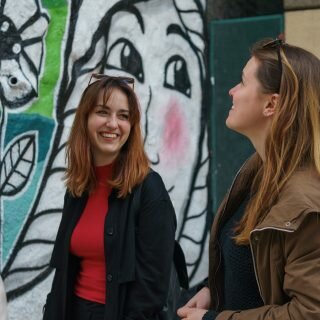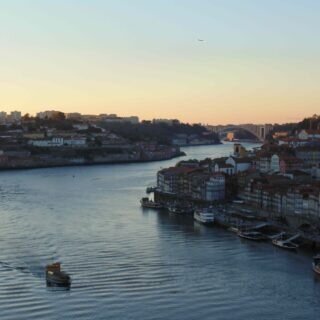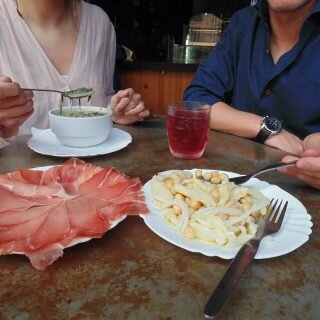The Clérigos tower over everything in the historical downtown of Porto, but its surroundings are quite remarkable in their own right. It may act as the central sun, but its orbiting moons hold a not so monumental, but a more delicate beauty. Of these many moons, the gardened one stands out: the João Chagas Garden, more commonly known as the Cordoaria Garden.

The Codoaria garden dates back to its founding in 1865, and was designed by a prolific German garden designer who made most of his career in the city of Porto. Although it was partly destroyed by a cyclone in 1941, and then controversially redesigned by a modernist architect in 2001, the inherently Romantic atmosphere of the garden persists, no less due to its striking statues that populate the ground underneath the thick canopies of its tall trees. Quite fitting the lunar analogy is a statue alluding to the “Kidnapping of Ganimedes” of 1898. A fine bronze statue of authorship of Portuguese sculptor Fernandes de Sá, depicting Zeus, as an eagle, kidnapping Ganimedes to have him server the nectar of the gods in Olympus. Romanticists were often drawn by the medieval mythos, but its gardens aren’t an adverse place for a piece of art pertaining to more Hellenistic themes. Another remarkable statue, also in bronze, is named “Flora”, of clear Art Nouveau and its naturalistic themes, of a beautiful woman among plants and trees. Authored by António Teixeira Lopes, a student of the extremely prolific sculptor Soares dos Reis, it dates to 1904.

The garden also possesses statues of important personalities, among them the famous Portuguese writer and monarchist Ramalho Ortigão, and also of the tragically short lived poet António Nobre (that’s the third António mentioned in this text, remarkable concentration of Antónios in this garden), authored by Leopoldo de Almeida in 1909, and Tomás Costa in 1926, respectively. For a relatively small garden, these are already quite a few statues. However, there is still another set of statues to speak of, rather more contemporary but just as remarkable in form as the others. It is located along the western steps of the garden, near the corridor of oddly shaped trees, facing the courthouse. This one is called “Treze a rir uns dos outros” which roughly translates to “Thirteen (people) laughing at each other”. It is a strikingly apt name: it quite succinctly describes the piece of art. This is the most recent of the statues, dating back only to 2001, and it was authored by Juan Muñoz. Tragically, it was his very last work, as he died in the same year as he completed the pieces. It is quite an honour for the Porto to hold his memory in such a way. As was characteristic of Muñoz’s striking ability, there is a bit of a story being told through the sculpture. Although expressively depicting various men laughing to tears, the familiarity of the scene, the unison reaction in and of itself captures the moment and thus implies the story. One of a very funny joke being told among old friends taking a break on the steps of a building or a street. It is indeed a familiar scene for the city of Porto.

At least hundreds and perhaps thousands of people pass by these statues of the Cordoaria garden every day, myself included. Not often is a thought spared by the pieces of art, although they hold such interesting history, themes and art. It’s not strange. They are dwarfed by the Clérigos Tower, the old jail, the courthouse, the Neo-Palladian Hospital of Stº António (yet another António), and the Rectory of the University of Porto. That is not to mention even the trees under which they take shelter, which vary from massive to bizarre. But there they are, intemporal and steadfast as statues tend to be, standing there to be eventually appreciated by someone in the mood to pay attention to detail.
If you want to explore this beautiful open air museum contact us! We would be happy to show you it´s secrets!



